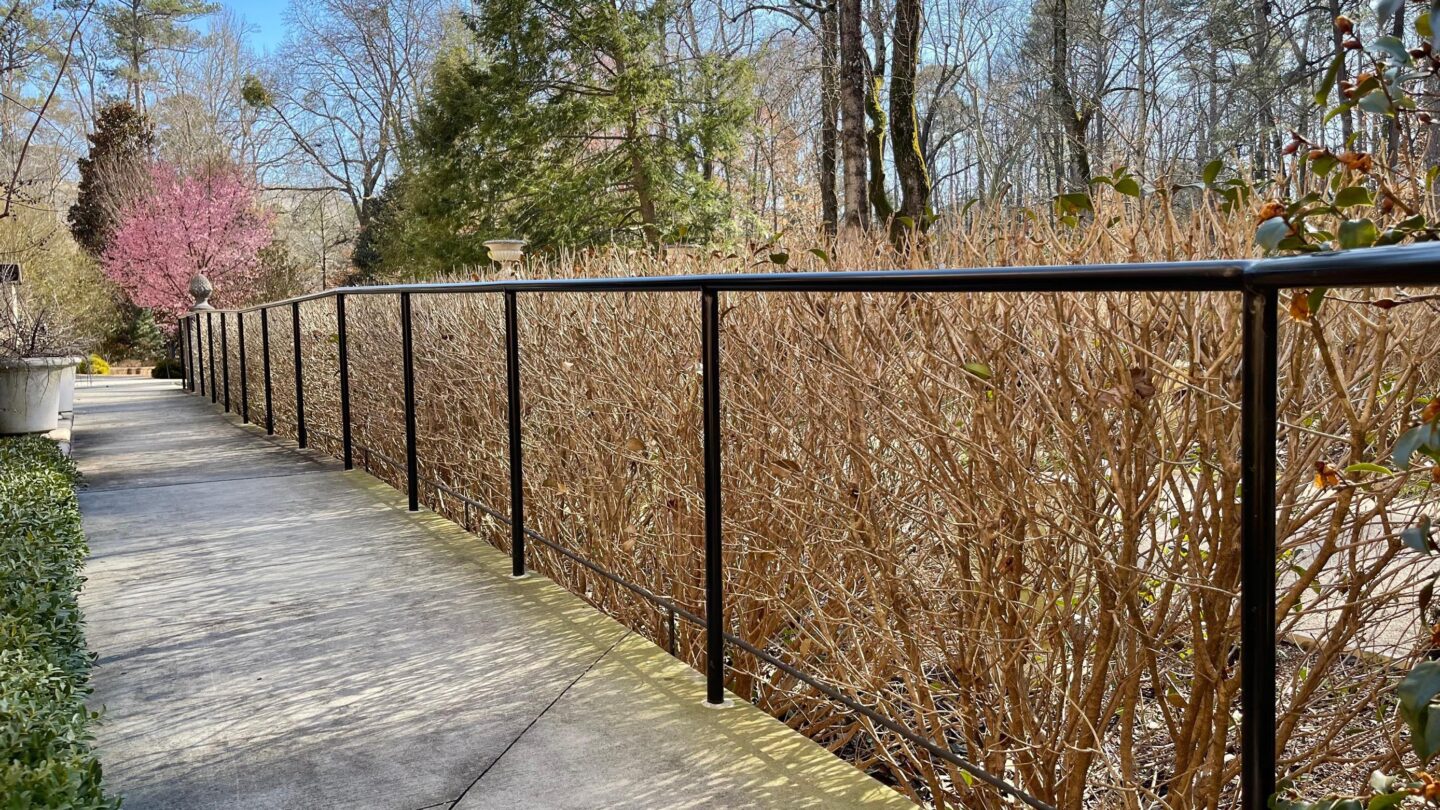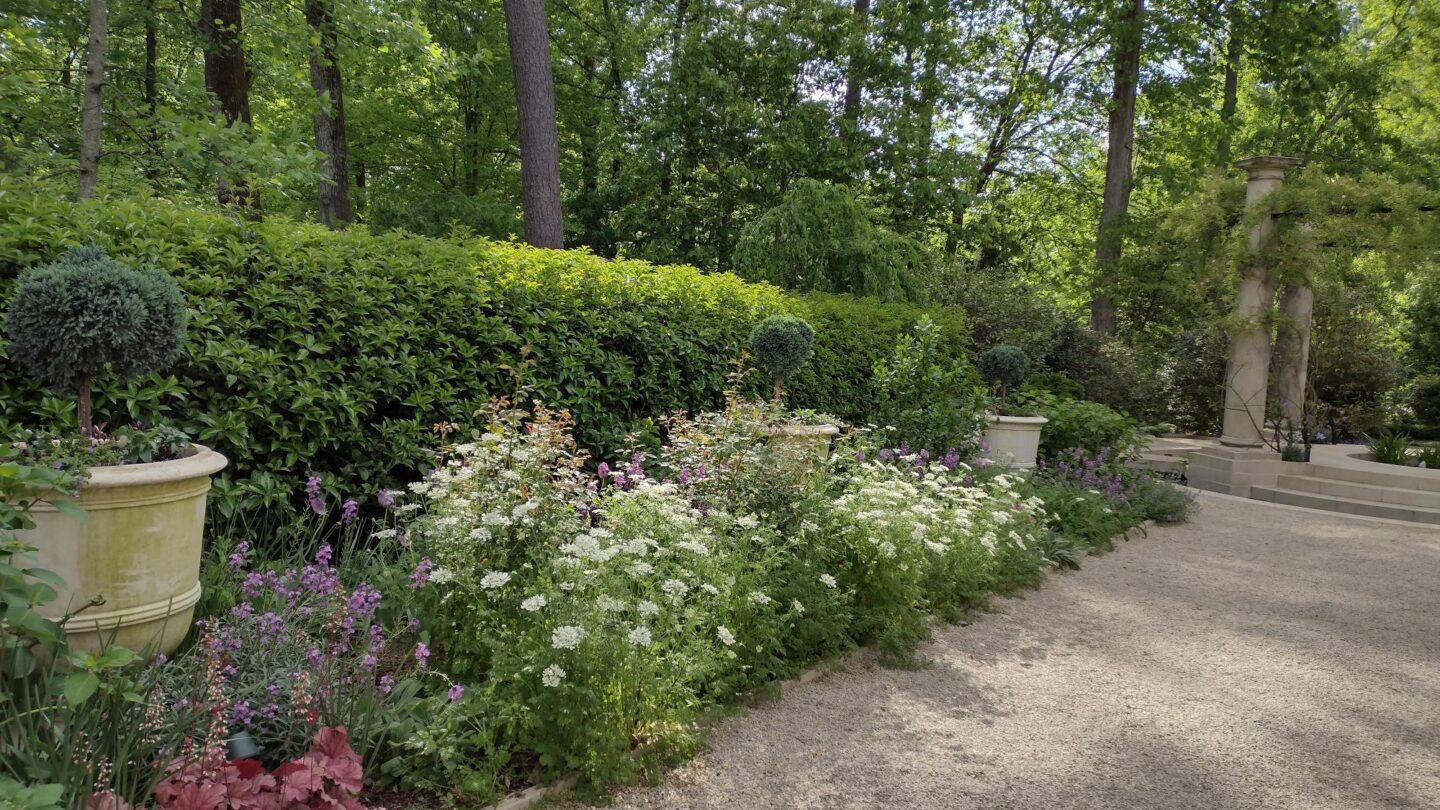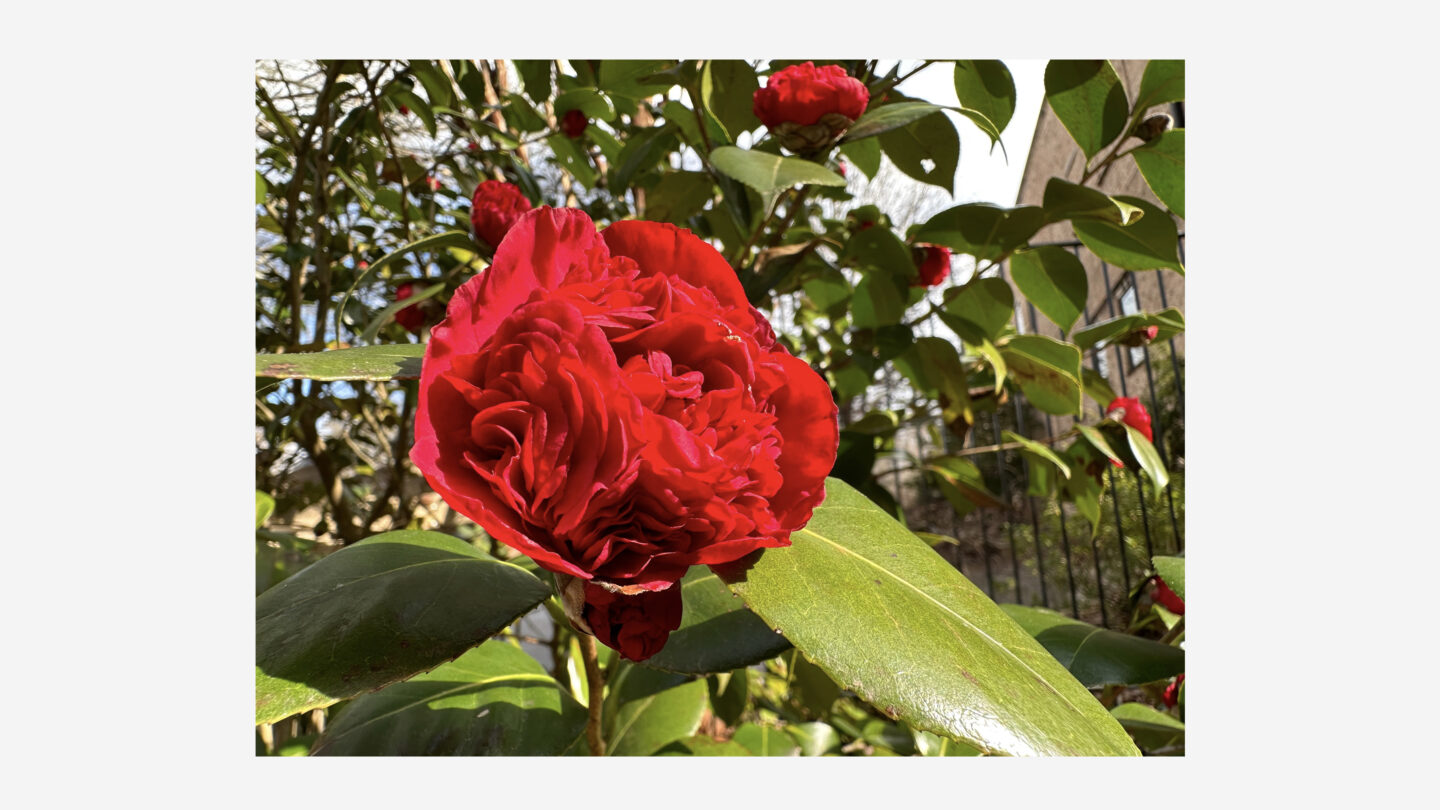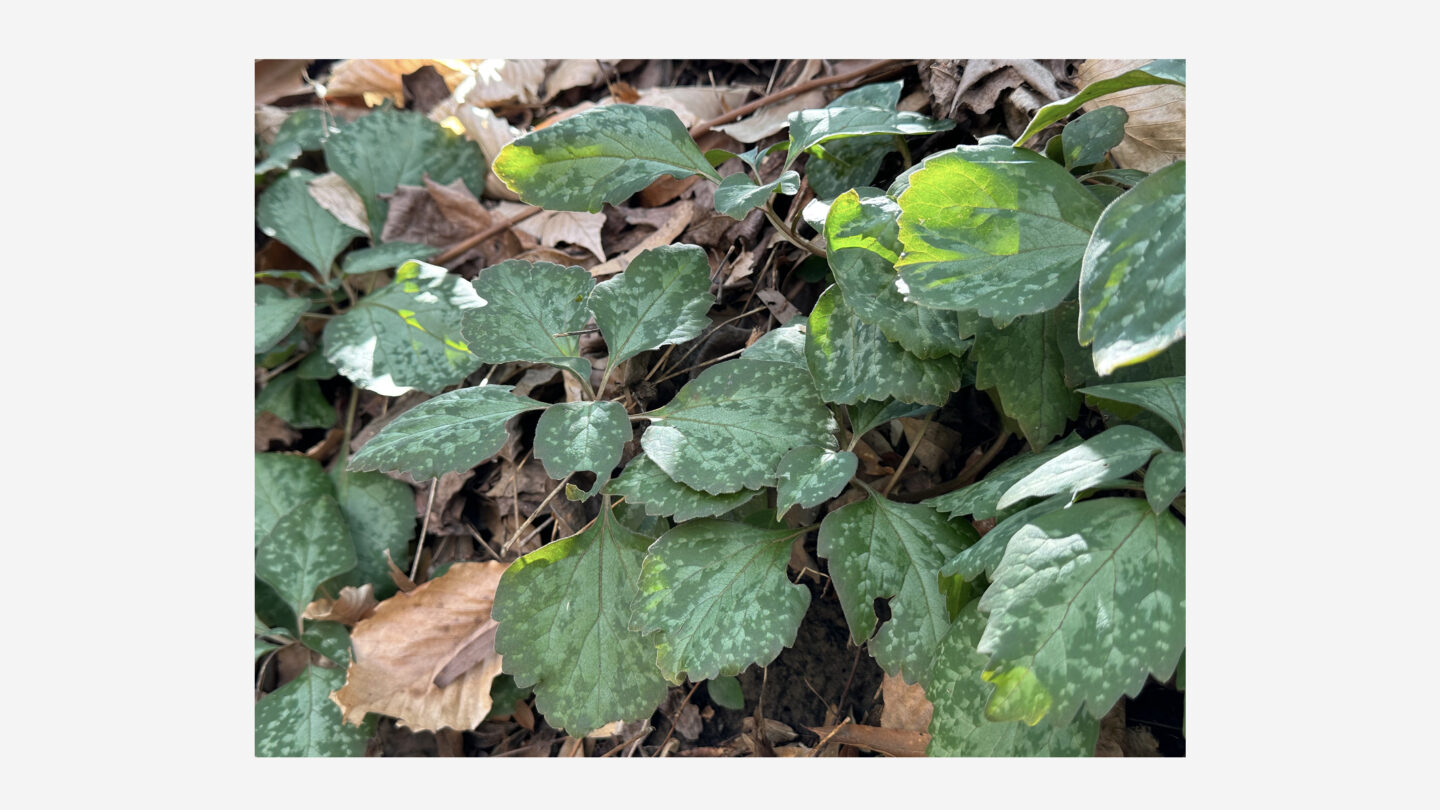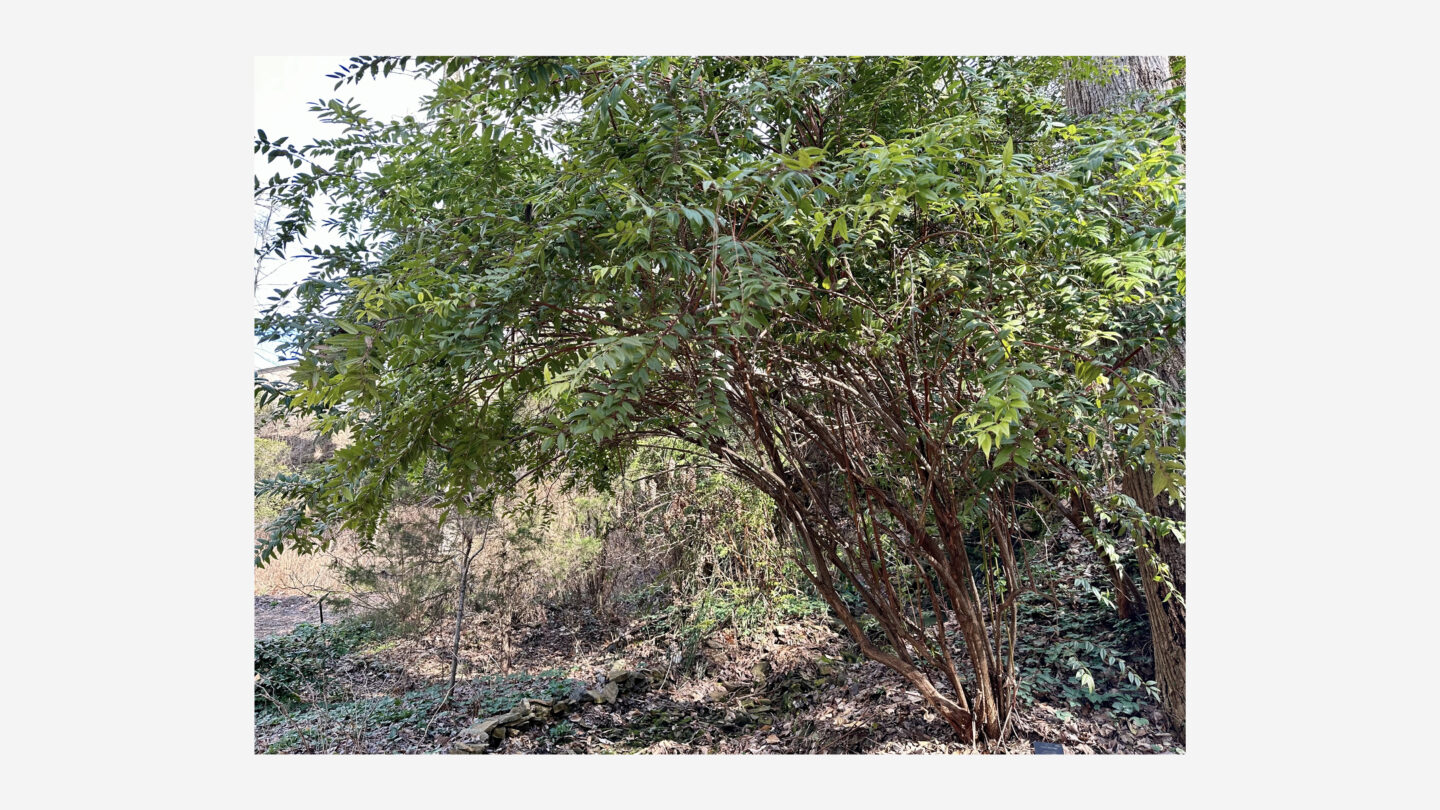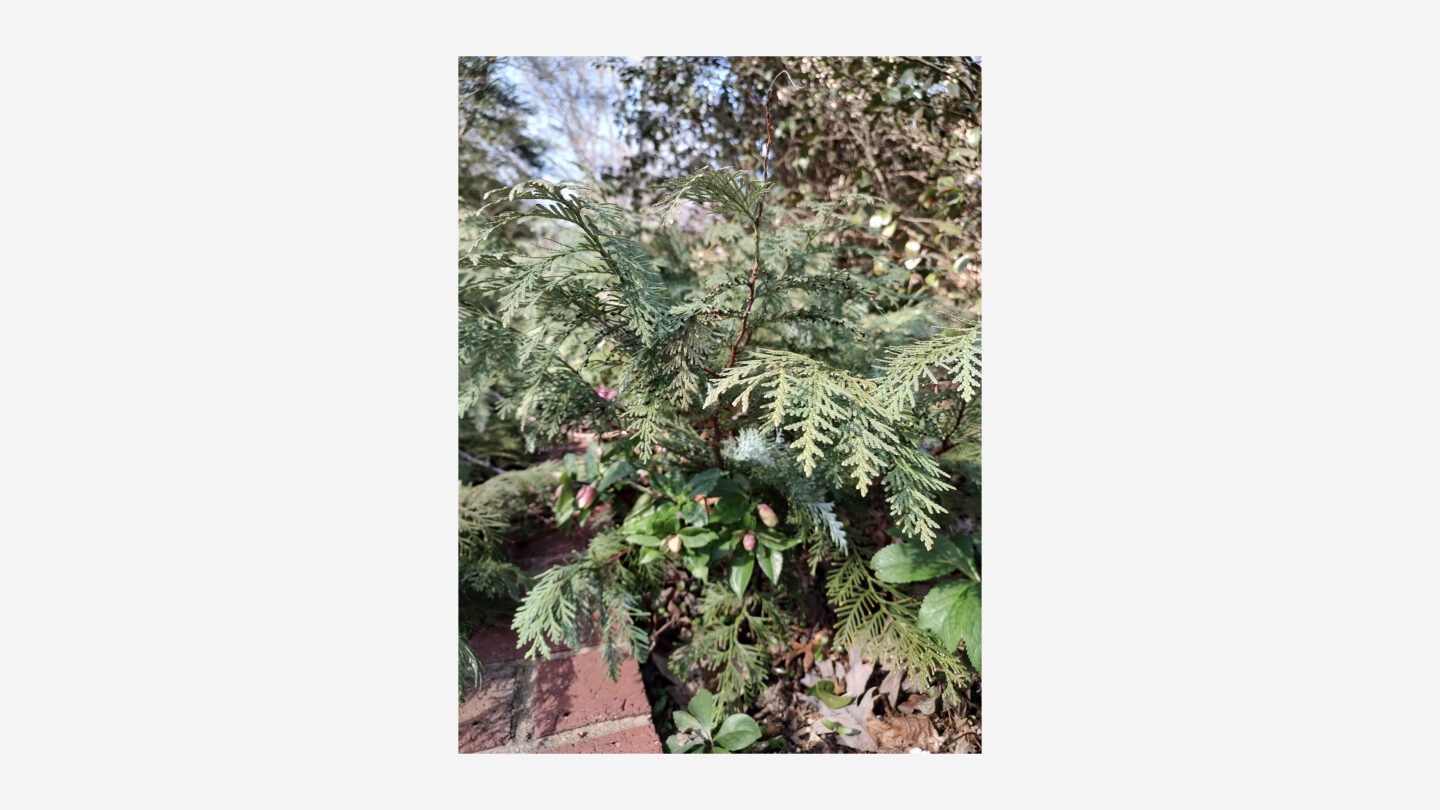December 8, 2022, was a t-shirt and shorts day in Atlanta with a record-breaking high of 78 degrees. Little did we know that just a few weeks later on December 24, our thermometers would dip to a frigid 8 degrees Fahrenheit, the coldest temperature seen in our area since 2014. Damages to the gardens in the metro area as a result of this polar plunge are now fully manifesting and Goizueta Gardens is no exception.
Olguita’s Garden, one of nine signature gardens within Goizueta Gardens, lost the majority of its fall-planted seasonal color. These annuals keep the garden flowering and full of color year-round, but the ornamental mustards froze, many violas had leaves completely rupture, and 150 seed-grown, double-flowered apricot foxgloves frosted below their growth points.
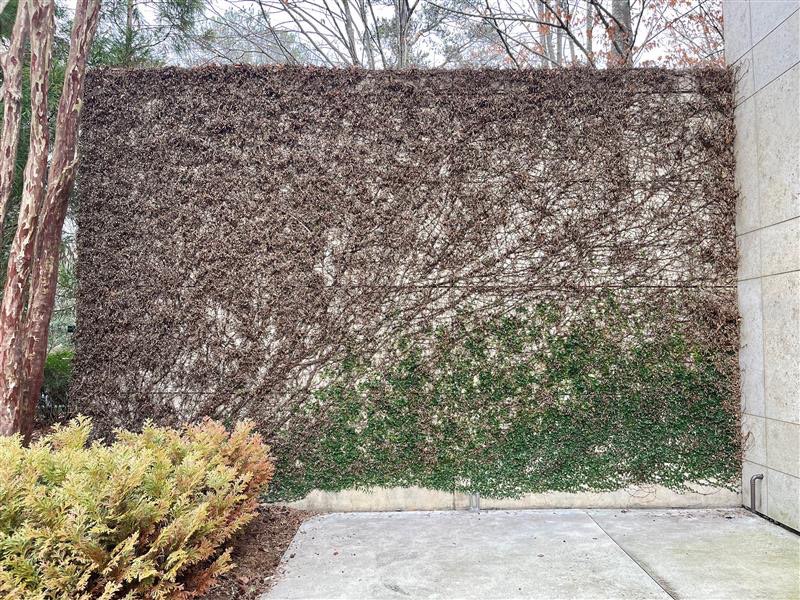
Creeping fig vine covers walls throughout Goizueta Gardens (seen here in the administrative courtyard.) Hard cuts to remove permanently brown stems and leaves may be necessary on these vines in spring. For now at least we know they aren’t completely dead, as visible green sprouts are emerging from the base here and in Olguita’s Garden.
Evergreen creeping fig (Ficus pumila) that adorns the stucco walls throughout the garden turned chocolate-brown but is now resprouting from the base, as is decorative evergreen Japanese aralia (Fatsia japonica). The main hedge for the double border, Fortune’s tea olive (Osmanthus x fortunei), defoliated to nearly 100%, three special seed-grown camellias (Camellia sasanqua) that were over 20 years old have died back from 7’ to 1’ and normally tough-as-nails rosemary (Salvia rosmarinus) have lost every juicy, fragrant leaf.
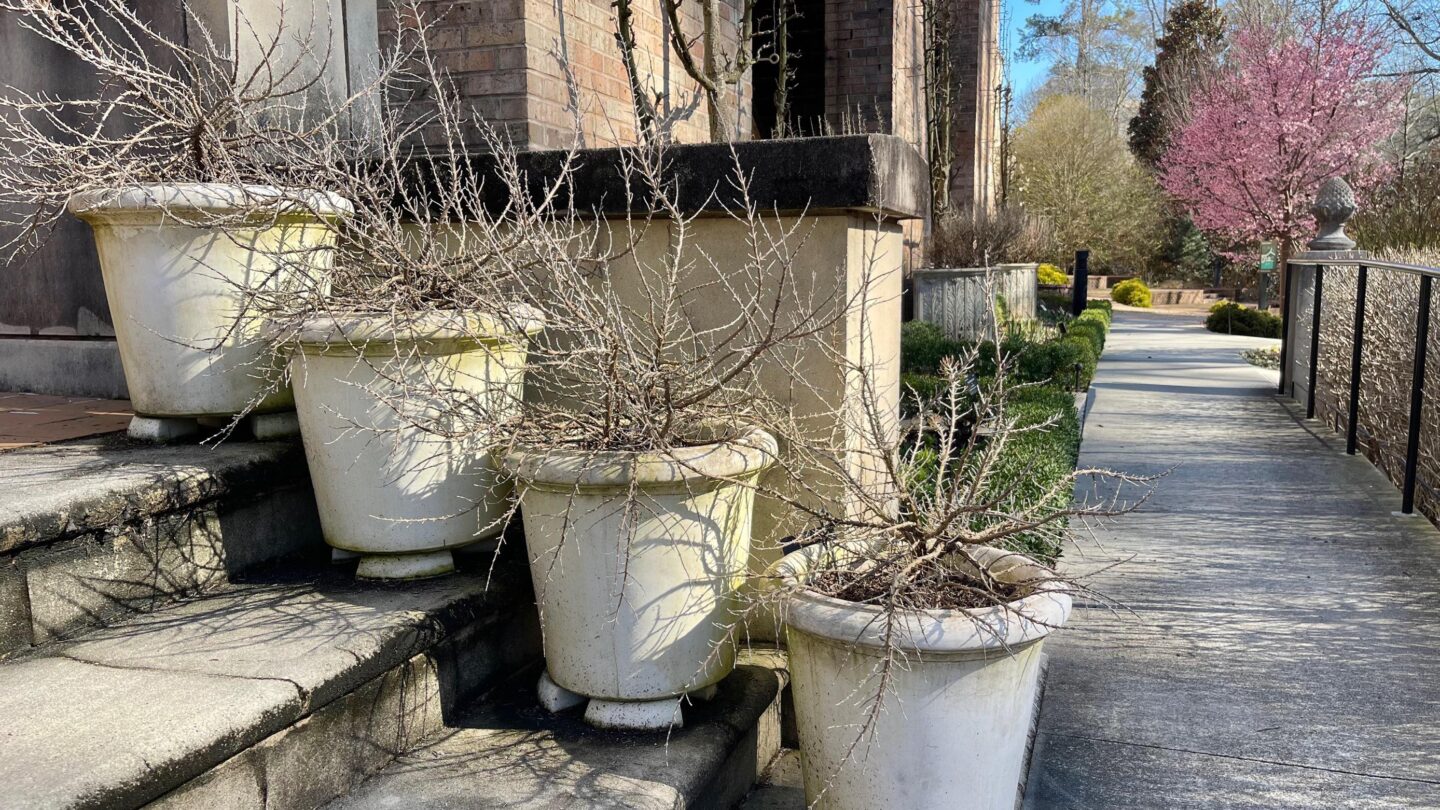
Eight pots of ‘Chef’s Choice’ rosemary adorn the stairwell of Olguita’s Garden. We prefer this cultivar over others because of its pendulous form and extra fragrant foliage, however, it is less cold hardy than some other forms. We continue to wait on these plants as the stems are still green although all foliage has dropped.
In other parts of campus, boxwood (Buxus cvs.) and Japanese holly (Ilex crenata) have discolored foliage. Ferns that would typically be evergreen like autumn fern (Dryopteris erythrosora) or holly fern (Cyrtomium falcatum) are heavily blemished and will be cut back to the ground. All this carnage certainly brings a tear to every gardener’s eye but don’t let it get you down.
Adjusting to nature’s hard knocks is part of gardening, and plants are often surprisingly resilient.
Not everything is dead! It may just seem that way initially.
- For soft-tissued plants (seasonal color for winter displays): if no green growth is seen by this point, the plant IS dead. Begin planning your spring and summer garden!
- For evergreen trees and shrubs with damaged or discolored foliage: lightly scrape the stem in a small spot, starting at the tip of the branches and working downward towards the base, if needed. If green tissue is revealed, there is still life! Continue to wait for warmer temperatures to reveal the extent of the damages. What doesn’t have leaves in the spring can be clipped off and what does have leaves is what’s left of your plant. If the tip scraping reveals brown tissue, continue to progress down the stems toward the base. The lower you go, the more severe the damage seen. We had a few zone 8 rated Japanese blueberry trees (Elaeaocarpus decipiens) that were brown ALL the way to the base. More than likely, they will resprout from the base and we will no longer be able to use these specimens in their intended location as their shape will be very different – taking many years to become trees again.
- For hardy, deciduous trees and shrubs: they should be unfazed for the most part as they were leafless, “asleep” for winter when the cold came. The most likely damage is to flower buds, which are less cold hardy than stem or leaf buds. Some of the paperbush shrubs (Edgeworthia chrysantha) lost their flower buds in this freeze but will be fine otherwise. Wait until new growth in spring before pruning so you can see where any damage ends.
- For perennials: similar to deciduous trees and shrubs, they entered the dormant phase prior to the cold and should pop right back up as normal in the spring.
Something I have noticed over years of gardening is that plants often rated for colder zones like sweetbox (Sarcococca) get “tricked” by little warm spells and can be more susceptible to cold damage than perhaps a zone 7 plant that needs more warmth to get its sap flowing such as Japanese spiketail (Stachyurus praecox).
It’s also worth mentioning a few evergreen plants that held up really well at this time, which is easy to note since most did not!
- Poet’s laurel (Danae racemosa) – a slow-growing, arching evergreen shrub for shade with orange winter fruit
- Yaupon holly (Ilex vomitoria) – a southeastern native shrub or small tree with grey bark, small dark evergreen leaves and red berries
- Japanese camellia (Camellia japonica) – overall fared much better than fall-flowering sasanqua camellias (Camellia sasanqua), with slight foliar discoloration but most flower buds still intact
- Southern magnolia (Magnolia grandiflora) – these evergreen Southern stalwarts were unfazed
- Coast leucothoe (Agarista populifolia) – an arching evergreen shrub native to Georgia, that showed no signs of damage
- Korean arborvitae (Thuja koraiensis ‘Glauca Prostrata’) – a dwarf conifer with green needles above and blue-gray coloration beneath
- Eastern redcedar (Juniperus virginiana) – no damage seen on many different cultivars or the straight species of this native conifer
It’s fun to experiment with plants and push the limits of what can be grown in our gardens. Cold weather will come again. It may be next year or 10 years from now, but it’s bound to happen. If you lost some special plants, chalk it up to education and experience and start re-envisioning your garden space. Afterall, that’s what makes a great gardener!



